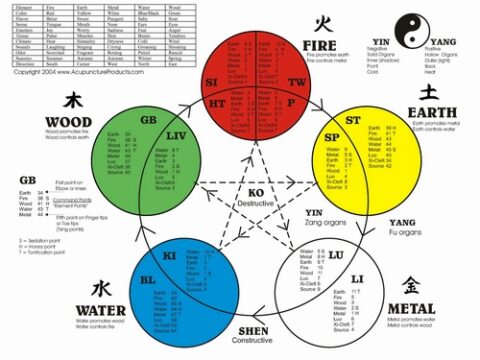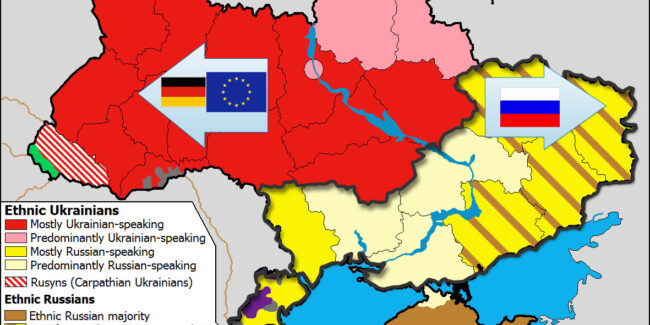Extracts from Brihat Nakshatra
The saptarishi nakshatra afford a fine way to determine the future of the world and trends in world affairs. While Chaitra shukla charts have been used for ascertaining the future of governments, countries and nations, Vedic astrology tools for predicting the future of the world itself or mankind have been relatively in disuse in the last few centuries.
Natural saptarshi chakra
Saptarshi I Dharma II Artha III Kama IV Moksha 1 Marichi 1 Ashvini 8 Pushya 15 Svati 22 Abhijit 2 Vashishtha 2 Bharani 9 Ashlesha 16 Vishakha 23 Sravana 3 Aïgiras 3 Kritika 10 Magha 17 Anuradha 24 Dhanishtha 4 Atri 4 Rohini 11 P.Phalguni 18 Jyeshtha 25 Satabhisaj 5 Pulastya 5 Mrgasir 12 U.Phalguni 19 Müla 26 Pürva bhadrapada 6 Pulaha 6 Ardra 13 Hasta 20 Pürva Asadha 27 Uttara bhadrapada 7 Kratu 7 Punarvs 14 Chitra 21 Uttara Asadha 28 Revati
As mentioned earlier, reckoned from east to west the saptarsi are Marichi, Vasistha, Aïgiras, Atri, Pulastya, Pulaha and Kratu indicating that Kratu followed by Pulaha would be the first to rise. Varahamihira is referring to these two stars in the Great Bear constellation. When any naksatra (yoga tara) is situated exactly in the middle of the projected longitudes of Pulaha and Kratu, then it furnishes the exact date for the commencement of the Astrological Century which shall be ruled by the naksatra indicated [by the yoga tara]. Varahamihira refers to the Magha as the constellation ruling the commencement of Kali Yuga. At the time of the Mahabharata war, the saptarsi were in Regulus confirming that Varahamihira was talking about the commencement of kali Yuga.
Regulus (Alpha Leonis) means “the little king” in Latin. It is one of the four Royal Stars called four Guardians of Heaven or Kendra Digpala. In western astrology, Regulus is the Archangel Raphael, the Healing Archangel whereas in Vedic astrology, it is Vaishravana Kubera, the lord of wealth and marker of the Northern quarter as well as its guardian. It is the heart of the lion and is the yoga tara of Magha naksatra. Any eclipse in this naksatra directly affects the political stability of the region from Persia to Delhi (North India).
Present Period calculations
Kali Yuga started on 23 January 3102 BC using the proleptic Gregorian calendar and has a junction or Yuga opening period of 45 saptarsi naksatra. During this period, gradually the effects of Kali Yuga will manifest although there will be sub-periods of each of the Yuga.
Points to bear in mind –
- The saptarsi naksatra is derived by a line drawn between Pulaha and Kratu and is taken as the seat of Kratu, even though all the saptarsi are positioned therein.
- The remaining six seers in the reverse order will sit in the six naksatra preceding this saptarsi naksatra. For example, if the saptarsi are in Magha, then this is the seat of Brahmarsi Kratu as well and the preceding six naksatra are for the remaining six in the order – Pulaha in Ashlesa, Pulastya in Pusya, Atri in Punarvasu, Aïgiras in Ardra, Vasistha in Mrigashira and Marici in Rohini.
- Thus the seventh naksatra counted in the reverse from the saptarsi naksatra becomes the seat of the first of the saptarsi Marici and will be close to the ‘Ayanaàsha Point’. For example, from 1699 AD, the saptarsi are in Mrigashira naksatra (No.5) for 960 years; counting in the reverse, the 7th naksatra is Uttara Bhadrapada which is the seat of Marici. The Ayanaàsha point is close to Uttara Bhadrapada naksatra and at present the ayanaàsha is about 23°58’ bringing the point into Pürva Bhadrapada. The Maximum range is one naksatra (13°20’) behind.
- Ruler of the Saptarsi Millennium: The Lord of the 8th naksatra counted in the direct zodiacal order from the saptarsi naksatra shall be the lord of the saptarsi millennium (approx 960 years). For example, between 4062 – 3102 BC the saptarsi were in Pürva Phalguni naksatra (No.11) and the 8th naksatra from this is Jyestha ruled by Indra. Thus Indra was the ruler of the Saptarsi millennium Pürva Phalguni and Yudhisthira was crowned king in Indraprastha (Delhi) in 3089 BC. The importance of Indra dwindled after the beginning of Kali Yuga when the Saptarsi moved into Magha and the Kaurava of Hastinapur perished.
- Proof of existence of an ancient civilisation indicates that there was sufficient sattva guna during its period to save things for such a long time. For example notice the flourishing Indus Valley Civilization period which coincides with the reign of Maharaja Yudhisthira (Pandava dynasty) in India.
KY Period From To No. Naksatra
-9 960 -11741 -10781 19 Müla Last ice age ends after 65,000 years with müla gandanta; earliest signs of agriculture
-8 960 -10781 -9821 18 Jyestha
-7 960 -9821 -8861 17 Anuradha
-6 960 -8861 -7901 16 Vishakha
-5 960 -7901 -6941 15 Svati -7500: Neveli Cori Excavations in Turkey reveal advanced civilization with meticulous architecture and planning; -7000: Early evidence of horses in the Ganga region [Frawley]
-4 960 -6941 -5981 14 Chitra Mehrgarh grows barley, raise sheep, goats, store grain, entomb dead, buildings of sun-baked mud bricks.; -6500: Rig Veda I mandala 117.22, 116.12, 84.13 winter solstice in Aries
-3 960 -5981 -5021 13 Hasta -5500: Mehrgarh villagers are making baked pottery and thousands of small, clay of female figurines (interpreted to be earliest signs of Shakti worship), and are involved in long-distance trade in precious stones and sea shells.
-5500: Date of astrological observations associated with ancient events later mentioned in the Puranas (Alain Danielou).
-5000: World population, 5 million, doubles every 1,000 years.
-5000: Beginnings of Indus-Sarasvati civilizations of Harappa and Mohenjo-daro. Date derived by considering archeological sites, reached after excavating 45 feet. Brick fire altars exist in many houses, suggesting Vedic fire rites, yajna. Earliest signs of worship of Lord Siva. This mature culture will last 3,000 years, ending around -1700.
-5000: Rice is harvested in China, with grains found in baked bricks. But its cultivation originated in Eastern India.
-2 960 -5021 -4061 12 Uttara Phalguni -4000: Excavations from this period at Sumerian sites of Kish and Susa reveal existence of Indian trade products.
-1 960 -4061 -3101 11 Pürva Phalguni -4000: Date of world's creation (!)
-3928: July 25th, the earliest eclipse mentioned in the Rig Veda (Dr. P.C. Sengupta)
3089 BC: Yudhisthira Maharaja's reign starts in Indraprastha (Delhi)
1 960 -3101 -2141 10 Magha 3102 BC: Kali Era Calendar starts.
2448 AD Yudhisthira reign ends (?)
2 960 -2141 -1181 9 Ashlesa
3 960 -1181 -221 8 Pusya 900-300 Greek Empire;
600 BC-640AD Persian Empire
600-200 BC Maurya Empire
4 960 -221 739 7 Punarvasu 1000 BC-50 AD Celtic Empire
300 BC - 500 AD Roman Empire
300 - 400 AD Gupta Dynasty
100-1600 AD Ottoman Empire
221BC - 619 Qin to Sui Dynasty
5 960 739 1699 6 Ardra 700-1100 AD Vikings Rule
600-1000 AD Islam Power Spreads
622 Ad Prophet Mohamed
1500-1600 AD Safavid Rule Persia
1200-1600 AD Mughal India
960-1279 Song Dynasty
1271 -1362 Yuan Dynasty
1368 -1644 Ming Dynasty
6 960 1699 2659 5 Mrigashira 1600-1900 AD Manchu-Ching Dynasty
New World; King Aryaman Aditya (Uttara Phalguni); Marici in Uttara Bhadrapada
7 960 2659 3619 4 Rohini
8 960 3619 4579 3 Krittika
9 960 4579 5539 2 Bharani
10 960 5539 6499 1 Ashvini
11 960 6499 7459 27 Revati
12 960 7459 8419 26 Uttara bhadrapada
Note:
1. Periods in Years
2. Years From & To are in Proleptic Gregorian Calendar
3. Physical 27 naksatra have been used for dates, finer calculations required for Nos.21 & 22 for Abhijit insertion
4. KY stands for dating from the start of Kali Yuga and the count is in terms of periods of 960 years for saptarsi movement in each naksatra.
5. The naksatra numbers and names correspond to the tentative placement of the saptarsi in a naksatra.
Antardasha No Naksatra From To Planet Devata 5 Mrigashiras 1699 1799 Mars Chandra 4 Rohini 1799 1899 Moon Pitamaha 3 Krittika 1899 1999 Sun Agni 2 Bharani 1999 2099 Venus Yama 1 Ashvini 2099 2199 Ketu Ashvini Kumar 27 Revati 2199 2299 Mercury Püshan 26 Uttara bhadra 2299 2399 Saturn Ahirbudhanya 25 Pürva bhadra 2399 2499 Jupiter Ajaikapada 24 SHatabhisaj 2499 2599 Rahu Varuna 23 Dhanistha 2599 2659 Mars Vasu
Just see what started in the year 1999! Bharani antardasha which is ruled by Yama the god of death…
Now yama rules for a decade from 1999-2009…March (pratyantar). During this decade of Mrigasira-Bharani-Bharani the war against terror started.
Thereafter (Ashvini nakshatra, 2009-2019 pratyantara) the Asvini Kumara are coming to the rescue of the world and there will be a rejuvenation of spirit. People will find new medicine and new research will cure deadly diseases like cancer and Aids. Old men will marry very young girls with dreams of regaining their youth. New medicines to look and feel younger and healthier.













 DBC offers online courses in jyotish (Vedic Astrology) taught directly by Sanjay Rath as per the tradition, through narrated power points and other audio tools. The courses are at different levels, from the beginners through the intermediate to the advanced and are known as SoHamsa | DBC courses, with individual classrooms and assistant teachers
DBC offers online courses in jyotish (Vedic Astrology) taught directly by Sanjay Rath as per the tradition, through narrated power points and other audio tools. The courses are at different levels, from the beginners through the intermediate to the advanced and are known as SoHamsa | DBC courses, with individual classrooms and assistant teachers
 Sagittarius Publications is the publisher and distributor the popular quaterly magazine the Jyotish Digest, as well as many thorough books on the subject of Vedic Astrology or Jyotish.
Sagittarius Publications is the publisher and distributor the popular quaterly magazine the Jyotish Digest, as well as many thorough books on the subject of Vedic Astrology or Jyotish. We have an excellent pandit Divākar ‘Deva’ Mishra, who is from the priests of Vindhyāvāsini Siddha Pīṭha to guide you through the hundreds of temples of Kāśi [Varanasi] and neighbouring regions. He can organise your pūjā, keep you safe and take care. He is supported by an English-speaking well-travelled spouse ‘Supriya Mishra’. Please contact them directly for any services, remedial pūjā and tours. They handled the 60+ member Kāśi Jyotiṣa Group 2022.
We have an excellent pandit Divākar ‘Deva’ Mishra, who is from the priests of Vindhyāvāsini Siddha Pīṭha to guide you through the hundreds of temples of Kāśi [Varanasi] and neighbouring regions. He can organise your pūjā, keep you safe and take care. He is supported by an English-speaking well-travelled spouse ‘Supriya Mishra’. Please contact them directly for any services, remedial pūjā and tours. They handled the 60+ member Kāśi Jyotiṣa Group 2022.